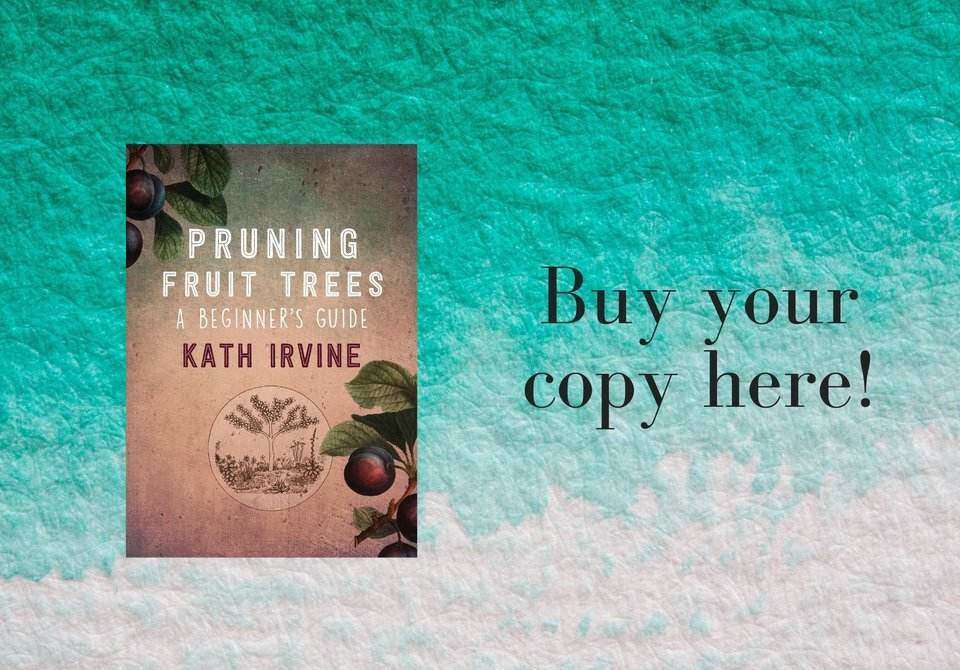How To Plant + Prune Deciduous Fruit Tree's

Shelter trees and deciduous fruit trees a go! - it's time to get planting.
Don't plant citrus or subtropicals though. It makes no sense to put their heat loving feet into freezing ground. If you live somewhere frost free and mild (eg: the winter-less north) then do it, for the rest of us, its savvy not to. Buy them now while good specimens abound, and tuck them away on the porch until the frosts fade and soil temps climb above 10 degrees again. October's usually a safe bet at my place.
Before you plant your trees, be sure of the best spot and appropriate spacings.
Dig
Dig a hole big enough to accommodate the roots - just enough so they are a snug fit.
- If you are on poorly drained or clay soil, puncture the bottom of your hole by pushing your garden fork in as far as it will go.
- If you are on sand or super free draining soil line the bottom of your hole with wet newspaper.
Mix the original soil 50/50 with compost unless you have lovely soil (you lucky devil), in which case you wont need any compost.
Plant And Backfill
- Soak trees in PB's (planter bags) in a bucket of water, until bubbles no longer appear. Slit the bag open and check the roots are all heading out/ downwards. Tease out, or trim any that are not.
- Bare rooted trees need to be planted as soon as possible - the very day they arrive even! Create a hump of soil for them to rest on - a solid base as it were. Sit the tree on the hump, making sure the graft is above the soil line and the roots are all heading downwards. Trim any too long roots to fit the hole.
- Position the tree so it's standing tall and straight.
- Backfill the hole pushing the soil, or soil/compost mix in. I like to use my hands here to firmly push all the soil around the roots. Your goal is no air gaps around the roots, and a sturdy tree.
- Give the tree a good tug to be sure it’s firmly in the hole.
Stake

Remove that flimsy bamboo stake and the green tape that holds it there - these are pot support, not part of your permanent planting plan. Left on, that green tape will grow into the bark and interrupt the precious flow of nutrient.
For best root development and the end goal of an independent, resilient tree – your tree needs to move about a bit in the wind, especially important if it's windy at yours. A bit of movement stimulates root development. More roots = a stronger tree with the ability to source a wide range of nutrient and support. More roots gives it the best shot at being drought proof, wind proof and heavy crop proof.
Drive a robust stake into the ground about 20cm away from the trunk on the windward side. Affix the tree to the stake with soft stocking tie - firmly, not rigidly.
- If you are in a really windy site then a stake each side is a good idea. Remove the stakes after 2/3 years once the tree has firmly pegged itself into the ground.
- If your trees are on dwarf rootstock then stakes are forever. Which is why I prefer a bigger rootstock - independence is a character I do so admire.
Feed And Water

- Spread a little compost on top. That's all, not sheep pellets nor blood and bone, we want something sturdy and fruitful, not insanely vigorous and leafy.
- Water gently to further settle any air pockets around the roots until its barely moist, not soggy.
- Lay cardboard and spread a mixed woody mulch on top.
- Remove the damn label! A plant label is another strangle hold moment if left wrapped about the trunk. Whip it off and attach it to the stake or tie until you sketch it onto your plan. What?! No plan! A rough sketch with names and rootstocks recorded is so very useful. Painted rocks or stakes are cool but do fade and need re doing. As for that box with all your plant labels from 1987 onwards ....
Prune
If your tree is a peach, plum or apricot, cut it at hip height or about 1m, just above a bud. Gasp! I know you’ll find this hard, but this easy, simple cut is what is going to have your tree be reachable, compact and full of fruit in a small space. So go on – be brave. If your tree is close to this height already – just leave it be. The thing that scares you is that this is the end. No my friends - it's the beginning. The first scaffold of branches will spring from this point for a nice low centre of gravity. Trust me here.
Apples and pears can be left as is.

